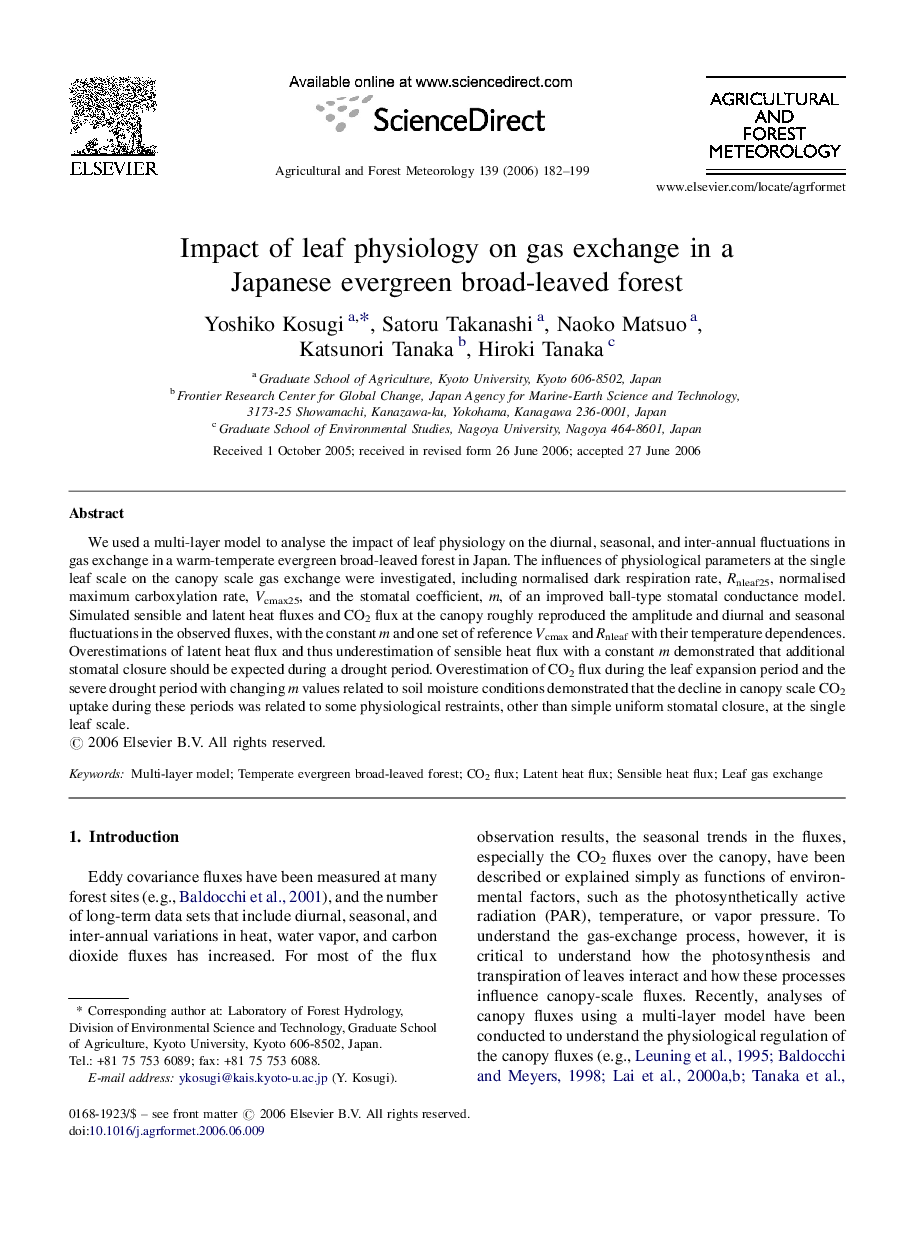| Article ID | Journal | Published Year | Pages | File Type |
|---|---|---|---|---|
| 82964 | Agricultural and Forest Meteorology | 2006 | 18 Pages |
We used a multi-layer model to analyse the impact of leaf physiology on the diurnal, seasonal, and inter-annual fluctuations in gas exchange in a warm-temperate evergreen broad-leaved forest in Japan. The influences of physiological parameters at the single leaf scale on the canopy scale gas exchange were investigated, including normalised dark respiration rate, Rnleaf25, normalised maximum carboxylation rate, Vcmax25, and the stomatal coefficient, m, of an improved ball-type stomatal conductance model. Simulated sensible and latent heat fluxes and CO2 flux at the canopy roughly reproduced the amplitude and diurnal and seasonal fluctuations in the observed fluxes, with the constant m and one set of reference Vcmax and Rnleaf with their temperature dependences. Overestimations of latent heat flux and thus underestimation of sensible heat flux with a constant m demonstrated that additional stomatal closure should be expected during a drought period. Overestimation of CO2 flux during the leaf expansion period and the severe drought period with changing m values related to soil moisture conditions demonstrated that the decline in canopy scale CO2 uptake during these periods was related to some physiological restraints, other than simple uniform stomatal closure, at the single leaf scale.
